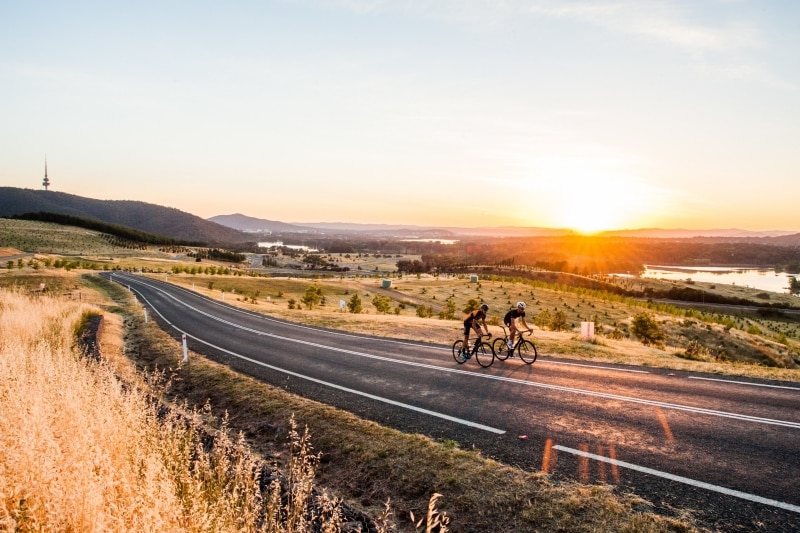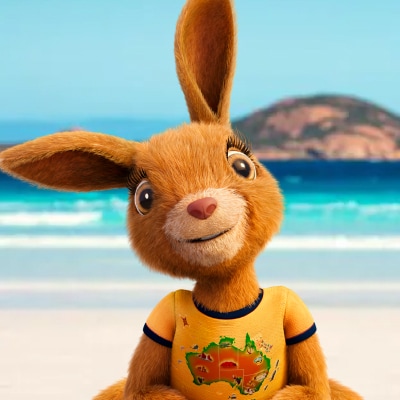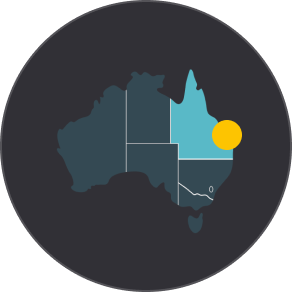
Australian Capital Territory

New South Wales

Northern Territory

Queensland

South Australia

Tasmania

Victoria

Western Australia

External Territories
View more

Bondi

The Whitsundays

Esperance

Mornington Peninsula

Noosa

Jervis Bay

Port Douglas

Byron Bay

Ningaloo Reef

Airlie Beach
View more

Kangaroo Island

Rottnest Island

K’gari

Hamilton Island

Lord Howe Island

Tiwi Islands

Phillip Island

The Whitsundays

Bruny Island
View more

Margaret River

Barossa Valley

The Grampians

Hunter Valley

Yarra Valley

Bundaberg

Daylesford

McLaren Vale

Glass House Mountains

Mudgee

Beginner's guide

Accessible travel

Planning tips

Trip planner

Australian budget guide

Itinerary planner

Find a travel agent

Find accommodation

Find tours

Find transport

Visitor information centres

Deals and travel packages
View more

Facts about Australia

Experiences that will make you feel like an Aussie

People and culture

Health and safety FAQ

Weather

Seasons

Cities, states & territories

Iconic places and attractions
View more

Your browser isn't supported
To view this story you'll need to open it in a new browser (Chrome, Firefox, MS Edge, Safari)
Best experienced with Immersive Audio
Video: Whalesong Cruises
INSIDE THE WORLD'S WHALE WATCHING CAPITAL
SCROLL TO EXPLORE
Video: Blue Dolphin Tours
"Bubble blowing," comes the tour guide's excited cry. "Heads down! They're coming!"
Sure enough, a moment later an orb of bubbles erupts around the swimmers, accompanied by cries of delight and surprise. Submerged just beneath the surface are the whales. Twirling and dancing beneath their human visitors, one thing's very clear; they're in a playful mood.
Video: Blue Dolphin Tours
Image: Blue Dolphin Tours
Every year between July and November, tens of thousands of humpback whales converge in the calm bay of a small Australian town.
It's here that extraordinary, once-in-a-lifetime encounters unfold between whale and human, earning the bay its nickname:
the whale watching capital of the world
Each year, some 40,000 humpback whales embark on an epic 10,000-kilometre [6,000-mile] round trip, migrating from the frosty southern oceans of Antarctica to their breeding grounds in the balmy waters of the Great Barrier Reef and back again.
Along the way, they hug the Australian eastern shoreline, treating humans to appearances at popular destinations such as Sydney's iconic beaches, around the coastline of Byron Bay and through the picturesque Whitsunday Islands.
Their route is so well-travelled, it's become known as the 'humpback highway'.
Video: Whalesong Cruises
Like any major thoroughfare, it's a busy one, and with such long distances to travel, the whales keep a foot on the accelerator.
That is until they reach Hervey Bay.
Video: Fraser Coast Tourism
welcome to hervey bay
Welcome to Hervey Bay, a laid-back beach town on the sun-drenched Queensland coast, three hours' north of Brisbane. In the past 40 years, this small village has developed a global reputation for its extraordinary record of interactions between whale and human, thanks to a unique set of environmental conditions.
The town is a gateway to the UNESCO World Heritage-listed Fraser Island – a long, thin landmass which flanks the length of the bay. Fraser isn't just conveniently located for humans; it acts as a barrier from the force of the open ocean, creating a wide, shallow pocket of calm water that's just right for a whale rest stop.

They’re here to rest,
recuperate and play.
With two decades of experience as a Hervey Bay skipper, Peter Lynch – who co-owns Blue Dolphin Tours , a local whale watching tour business – is well-placed to discuss the uniqueness of what happens here.
"Generally speaking, migrating humpbacks are intensely focused on their end goal of getting to their destination." But when they reach Hervey Bay, he says, it's a different story. After weeks of hard work, arriving in a calm, safe harbour surrounded by their friends and playmates put the whales, "in more of a holiday frame of mind."
Relaxed whales are curious creatures and "every interaction takes place on their terms." Visiting humans can be treated to all kinds of playful antics, from tail and fin slapping, to singing and breaching – the whales' version of showing off to each other, and to their human audience.
The most common behaviour seen here, known as a 'mugging' (where whales approach the boat for a close-up look), occurs here in Hervey Bay in higher instances than virtually anywhere else on Earth.
Some lucky guests may also see 'Spyhopping' – a vertical 'pop' out of the water headfirst – allowing the whales to better eyeball their visitors. "It really is special", says Lynch.
Video: Fraser Coast Tourism
So high are the chances of sightings, tour operators offer a money back guarantee during peak season.
Video: Tasman Venture
TAKING A BOAT TOUR
Getting up close and personal
Vicki Neville – a passionate conservationist, tour guide with local operator Tasman Venture , and subject of National Geographic documentary The Whale Whisperer – has done a lot of 'waiting' in her 20 years' tour guiding. Not that she'd call it that.
"Our regulations are extremely stringent," affirms Neville. "No boat is allowed to come within 100 metres of a whale – which means the moment we see one, we have to kill our engines and simply wait to see what they do."
"Rarely does it take them long to come over and investigate," she smiles.
Video: Blue Dolphin Tours
People don't come to see the whales, the whales come to see them.
Video: Tasman Venture
Whale watching is sometimes thought of as a passive sport, but that's not the case in Hervey Bay. Once a whale is sighted passengers are encouraged to wave and sing.
It might feel slightly silly, but – as you can see – it's an effective means of attracting the whales' attention.
Image: Tasman Venture
Since Australia's first commercial whale tours were launched here in 1986, Hervey Bay has set the global standard for responsible whale watching. So much so that in 2019, the area was declared the world's first Whale Heritage Site.
Image: Tasman Venture
The whale nursery
While every mugging is a thrill, there is one special kind of encounter found here that's extra hard to beat.
"The number of mothers we see here with their newborn calves here is significant," confirms Rebecca Greenshields. The general manager of another local tour operator, Whalesong Cruises , says the shallow, protected waters of the bay provide perfect conditions for both birthing calves, and resting with them on the long migration journey.
So much so, that Hervey Bay has developed an additional reputation as Australia's 'whale nursery'.
The town has developed this reputation among the whales to, it would seem. The gentle giants have been holidaying here for so long that mothers have started to bring their babies over to meet their human visitors, says Greenshields – sometimes even physically nudging them closer to boats for a close-up look.
Like any cherished holiday spot, Hervey Bay has become a place of positive memories for its underwater guests.
"They feel safe and protected around us here."
SWIMMING WITH WHALES
If a top deck encounter isn't intimate enough for you, how about diving into the whale's world?
Swimming with a humpback is something you'll remember for the rest of your life, and will put everything into perspective too; these majestic creatures can weigh up to 40 tonnes, and measure up to 16 metres in length.
There are strict regulations for this activity, to protect both whale and human. When the skipper deems the conditions right, you and a small numbers of swimmers in masks and snorkels will slip into the water, where you'll stay in one spot (either on a submerged deck, or holding onto a guide rope) waiting for the encounter of a lifetime.
It's an experience that unleashes a barrage of emotions, Neville says. "When passengers are in the water with the whales, from above, you hear some pretty funny noises coming from their snorkels – cries of joy, tears of laughter, that kind of thing."
By the time swimmers emerge, though, they're often speechless.
Despite the many spectacular and playful antics you might see on display, she adds, the memory most people hold dearest is the experience of making eye contact.
Video: Blue Dolphin Tours
Video: Tasman Venture
Nothing can prepare you for the moment you lock eyes with such an intelligent, sentient being.
Perhaps understandably, those who visit often describe their meetings with these magnificent wild creatures as "once in a lifetime". But for locals, who witness encounters like this regularly each July to November, there's nothing one-off about it.
This is just another day in the bay.
The spring break however doesn't last long for the whales. Come November, they turn their tails, preparing to make their way back down the highway towards their feeding grounds of Antarctica.
Until next year, of course, when they'll return once more to their favourite holiday town of all.
Image: Fraser Coast Tourism

































































